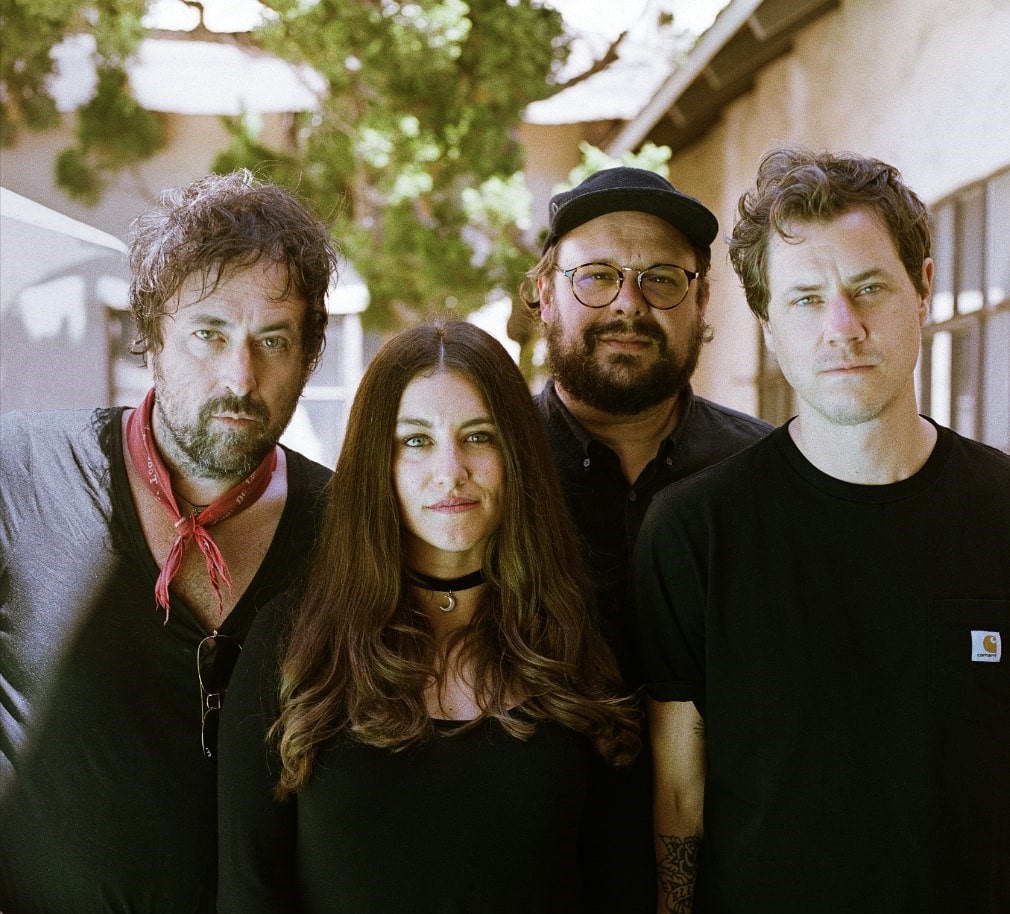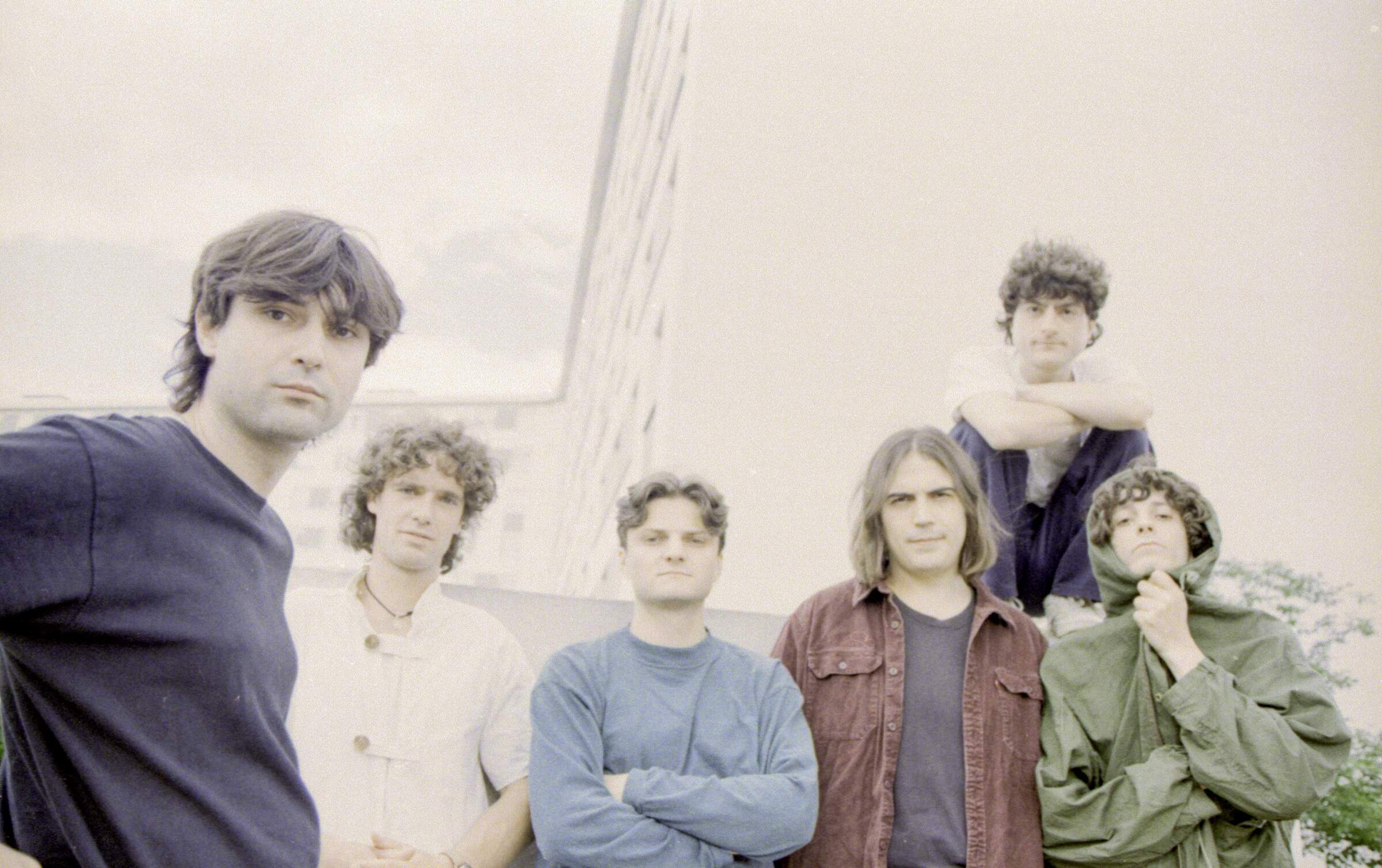Hunger interview with John Morton
The band formed 1967 in Portland, Oregon, and later moved to Los Angeles, where they gained a following after opening for groups such as The Doors.
Where and when did you grow up? Who were your major influences?
I grew up in Portland Oregon and started playing in bands when I was 16. It was a fun time being young and excited about music. My father played guitar and ukulele and would get together with my uncle and play Hawaiian music in the living room during the winter and in the backyard in the summer so I was around music constantly. My father would take me to classical concerts with Andre Segovia and flamenco with Carlos Montoya. My father had a wide array of music he’d play on the phonograph but I’d always sneak and play rock and roll loud when he was gone. I’d listen to The Kingsmen with Louie Louie and The Wailers with The Witch, both songs that are still crowd pleasers. The album that really got me going though was The Ventures. I loved Walk Don’t Run and Pipeline. I started out playing in a surf band and quickly took over lead guitar learning all the licks by listening to a record over and over. It’s a far cry from the simplicity of YouTube and all the guitar instruction now. Kids can out play us old timers but they don’t have the soul or experience. At 20 years old I was playing in sold out concerts with the biggest name bands and writing music for movies. That was quite a feat for a hometown kid from Portland Oregon.
The scene in Portland in the 60’s was quite exciting. There were plenty of places to play and lot’s of parties, high schools, store grand openings and battle of the bands. The girls loved the bands because of Beatlemania. Fans were great and even in Portland I felt like a celebrity. I was in The Outcasts and we were a hard working band making 25 dollars a gig for the band.
It all payed off when we won The Teen Age Fair beating 85 bands. From that accomplishment the phones were ringing off the hook guaranteeing us good money. The Outcasts were making 200 dollars a night and our next gig was for 6 nights at a beach club for 1200 dollars. That was serious money in 1967. Part of winning was a recording contract and television appearance on Dick Clark in Hollywood. The band decided to take the money and head for fortune and fame. We talked 2 go go dancers to going with us and share the rent. We rented a big truck and piled our equipment in. 2 of us rode in the cab and 4 of us in back. We almost got crushed on the curves when the amps shifted and driving through Bakersfield it was 103 degrees. We propped the sliding door with a mikestand so we wouldn’t pass out from the heat. When we arrived we had rented a house in Hollywood hills. We were dirty, hot and sweaty and still had to unload everything. The dancers got there in their air-conditioned blue mustang looking beautiful with their makeup and hair all in place smoking cigarettes. By the time we got done unloading they wanted to know what took us so long and we all laughed. The band was excited about performing on Dick Clarks show and then we’d be scheduled to record when the promoter from Portland showed up because he supposedly had connections. I remember Dick Clark saying ” Not another effing Northwest band! You guys can perform if we can fit you in.” We waited all day and it never happened plus the promoter never showed up so we could record. We were quickly running out of money and no gigs in sight. The dancers got us a gig at one of the clubs where they were dancing but that was a joke.The crowd was more interested in the topless dancers but we made enough to pay our share of the rent. We ended up taking care of the girls chiuauas, ironing their outfits and driving them to the clubs.That grew thin when we ran out of money and couldn’t pay the rent but as luck would have it things changed.
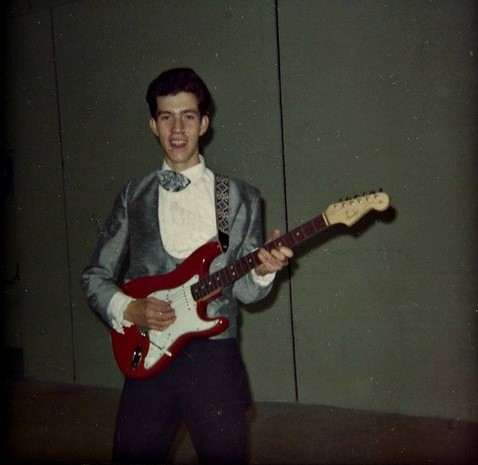
We were practising late in the evening and we took a break and stepped outside to have a smoke and a familiar face said, “Beautiful women, far-out music. Looks like paradise to me!” It was Jim Morrison of The Doors. “You guys got a great sound but your never going any place in this town unless you got original material.” I told him we were having a tough time finding gigs and he said he’d see what he could do. That week we got a call to play at The Magic Mushroom where the Dr. Demento show aired. We played our set and literally got booed off the stage.Top 40 Rock wasn’t very well accepted. This other band came on with gongs and incense burning chanting love is the word. Beads, beards and sandals was their attire. We took of our matching jackets, rolled up our sleeves to look more hip and decided to come on with our next set heavier on the organ and turned up the guitars and started off with She’s not There. We took on a Vanilla Fudge sound letting the organ fade in and build and the guitars followed holding on an A minor chord. We brought the crowd to their feet and then the drummer popped on the snare, slammed on the beat and they all hit the dance floor. After we finished the song the crowd went wild. Clapping, whistling and pounding on the tables. The owner said he never had a band received like that and hired us back. To this day I believe Jim Morrison was very instrumental in our quick rise in Hollywood.
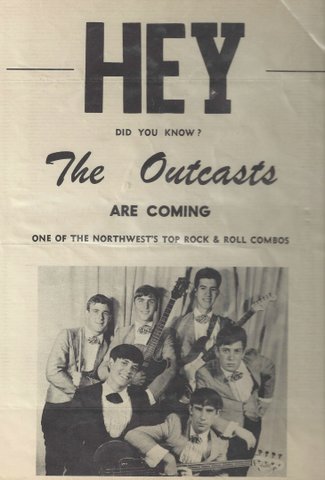
The gigs really started pouring in after that and a promoter and TV writer for Go magazine, Stan Zipperman wanted to sign us to a contract. We were young and naive and didn’t weigh our options or even realize how good a band we were so we signed our lives away. We were now with All American Productions the same company that Bill Holmes managed The Strawberry Alarm Clock. We knew they had a hit record so the band was excited and ready to do original material. The only problem was nobody was a songwriter so I stepped up and said I’d give it a try. Management immediately came up with the idea to have 12 songs for an album and play them on stage for a year before we would record. That way we’d have a following that was familiar with our music and it would spread quickly. They wanted 2 songs to hit the charts, not written by me but the music composed by me. The rest of the songs would be composed and written by the band. The first song they gave me was written by Paul Hampton and to be a title for a big movie production called She let him Continue with Tony Perkins and Tuesday Weld. I about crapped my pants given that kind of expectations for I was only 20 years old. I went to Pauls penthouse in Hollywood and the place was like a movie set, a grand piano, awards and famous actors on his walls and sheet music nicely placed. This guy was an actor, songwriter and well established but not quite famous and had been in a lot of tv shows.
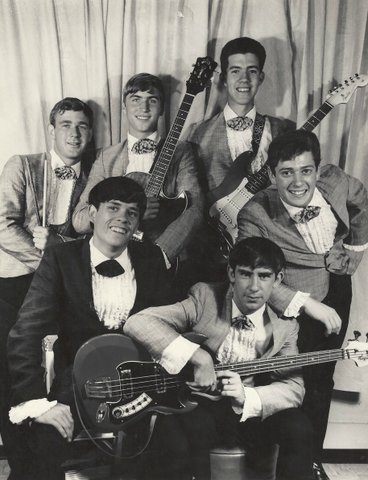
I listened to his rendition of She let him Continue and it sounded like a tv jingle so cheesy. It’d never fit for a dark psychotic movie. Management wanted something like The Doors but with a spanish bolero sound. I worked on that song for a week getting the guitar parts down opening with tympany drums and marching beat breaking into an opener like nothing I heard before fitting that psychotic mysterious feel. I took it to Mike Parkison and with the organ added it became more powerful. Management loved it. The Movie producers loved it and the actors loved it.
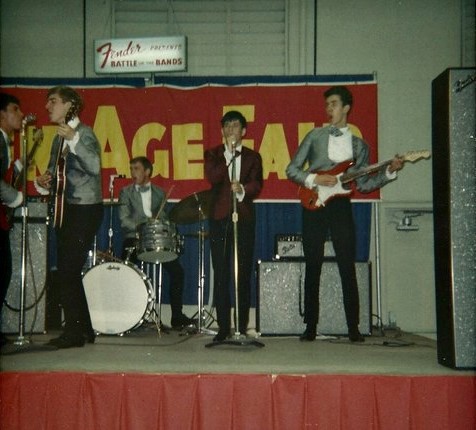
Were you in any other bands before forming Hunger? I know you were in a band called Touch and you released “Not So Fine” / “No Shame” 45 in 1968 on Public! label.
We were playing venues both as The Touch and Hunger because we had 2 singles climbing the charts and management said it would give the band a better shot for a hit record. If No Shame moved up the charts we’d be The Touch and if She let him Continue got there quicker we’d be Hunger. She let him Continue quickly climbed the charts because the anticipation by the air-play for a major movie theme excited all the radio stations and it was a new sound from a new band. We went from #50 to breaking into the top 40 in a weeks time and No Shame was in the top 100. Now management was thinking we might have 2 hits just on the strength of the movie She let him Continue. It was decided that we’d become Hunger. On the premiere of the movie we were set to play the big event. Two weeks before it happened it had gotten poor screening reviews. The mass promotion was stopped, the name was changed to Pretty Poison and Hunger’s single died. From She let him Continue we gained great respect from the industry and big labels were taking notice realizing we weren’t just another band. I was getting offers to write and compose for tv shows but management wouldn’t allow it because I was signed to their contract and that I’d write only for Hunger but that was fine with me and I focused to help create a great album.
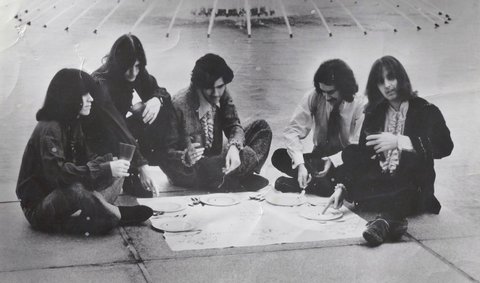
Can you elaborate the formation of Hunger?
The name Hunger came about by our manager from the phrase”strictly from hunger” meaning wanting more and always hungry. The name Hunger was just another way to strengthen our popularity and exposure. I liked it so much better than The Touch because Hunger would stick in peoples minds and create a real mystique behind the band. It still captures fans curiosity what we were all about with the psychedelic and creative times.
Do you have any memories from early rehearsing sessions?
The rehearsal sessions were quite unique. In the 60’s you could never hear yourself on stage. The bigger the venue was even worse. There were no monitors. Management told us if we wanted to sound perfect on stage the vocals would have to stand out. We’d do dry practices without any amplification developing strong harmonies and cueing when the lead singer would take his spot. Hunger’s vocals were so much better than the album on stage because we had the original line-up with Bill Daffern and Mike Lane sharing lead vocals. Management knew that would put us way ahead of most bands since we had great vocals and a strong original sound. Before the breakup of Hunger we had so many different singers we never could achieve what we originally had. Mike Lane was a great singer but he couldn’t carry it all plus play guitar and that is not what we originally intended and it took a toll on him. We rehearsed so much that we grew tired of playing 12 songs only at every gig. This was managements idea so we could go in the studio and record the album in a short time. Our on stage presence was to be flawless with no mistakes and that was the law by management. I look back now and see that management wanted a fine tuned machine to take us to the next level.
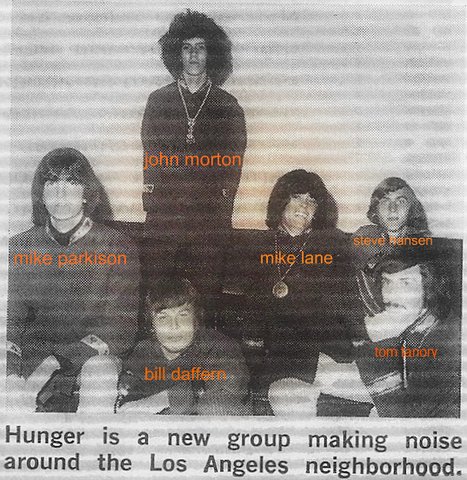
Was there a certain concept behind the band?
With managements help and our own creativity we continued to develop Hunger’s unique sound. We all liked the heavy northwest sound of The Wailers and The Sonics. We also liked The Swinging London sound and The Zombies and we were intrigued by The Doors. The keyboard player loved Jimmy Smith and his jazz sound. We took all those elements and developed a unique sound that still sounds great as the day we recorded it. Management wanted our sound to be like The Doors but not quite the same so I set out to write songs with inward meanings and delve into the darker side of our minds. I knew it would be ahead of it’s time and probably not be accepted as regular airplay but management said that The Doors had opened the way for Hunger’s kind of music Hunger’s music spoke to a generation that was trying to find out where they fit in with the Vietnam war, protests and social unrest. Years later I had someone tell me from Russia that Hunger was the only american rock music they could listen to during communist rule. It’s awesome to hear that and Hunger’s place in history and rock history will live on. Little did I know at 20 years old Hunger would have that kind of effect so many years later.
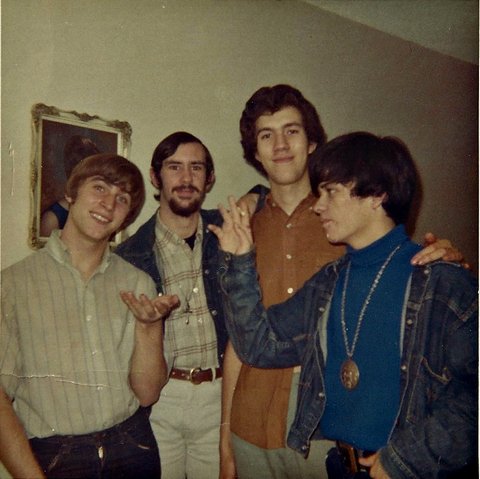
What can you tell me about recording sessions for your first album? Acetate was never released. It was until later you released an album titled Strictly From Hunger. This acetate version also features both Ed King and Gene Gunnels of Strawberry Alarm Clock.
The original recordings for the album were done in a studio in Venice California. Management was always trying to do things the cheapest way possible and our album suffered because of it. Hunger’s two singles No Shame and She Let Him Continue were done at Original Sound. There were so many hit songs recorded there. Jimi Hendrix recorded there and I believe The Cream did too. I wish we had recorded the album there. It would have truly captured what Hunger really sounded like. The sound engineers were highly experienced and knew how to create a hit song.
Instead we recorded with an inexperienced engineer and cheap recording equipment. To this day I don’t know how we achieved a decent sound with that junk. The original recordings were uneven in sound and poor mastering. I was sick when I heard it. It wasn’t even worth promoting in my opinion. It was all done on eight tracks and everything bled into each other. It was an absolute amateur job. It sounded like we were playing live with one mike. The engineer didn’t even have sound isolation for the instruments. The organ stood out from everything else. To this day Hunger sounds like an organ based band and that’s not what was intended. Management paid more to the top engineer Marty Serf at Capitol Records than what it cost to record the album. He did a great job with remastering and I never thought it was possible. Since the album was heavy with organ management decided to feature that and took out the driving guitars and leads so the commercial album, in my opinion was so lacking with the heart and soul of the band. Gene Gunnels played on every song except No Shame and Ed King did the lead on Colors and Open your Eyes. He had a strong sustain and fuzz on his leads. I used no effects just the guitar and amp. My leads had a more driving rhythm sound. Ed really wanted to join the band but was under contract with Universal and Strawberry Alarm Clock. He could stand out and not be restricted on his guitar leads. He never had that kind of freedom before. It would have been great having him in Hunger but he was destined for so much more when he joined Lynyrd Skynyrd.
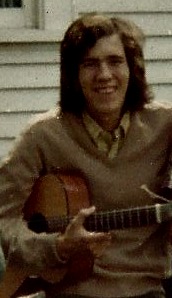
The Lost and Original Album came out with 2 different versions of the band. Strictly From Hunger was made for commercial airplay with shortened songs and heavy on the keyboard. The Lost Album was taken from the original acetate with longer songs and guitar leads brought up in the mix. My favorite version is the Void album. To me it captures Hunger at it’s best with reworked mastering. That album died quickly because Akarma had threatened to sue over their version of The Lost Album. Afterglow had released the album earlier but not through legal channels so it was considered a bootleg.
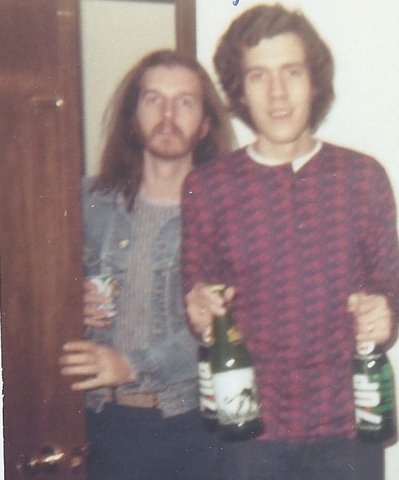
What kind of equipment did you use
It’s interesting that our equipment was just a mix of various amps. I had a Fender Bandmaster and Steve Hansen had a Fender Bassman. Tom Tanory had a Sunn double stack for bass and Mike Parkison had a cut-down Hammond C3 with 2 leslies. I also had a Standell amp. The guitars we had were Fender, Gibson, Hofner and Hallmark. I used the Fender Coronado for our two singles and the Hallmark Sweptwing on the Strictly From Hunger album. Steve Hansen used a Fender. Broadcaster on the album. Ed King used a 1959 Gibson Les Paul on lead work.
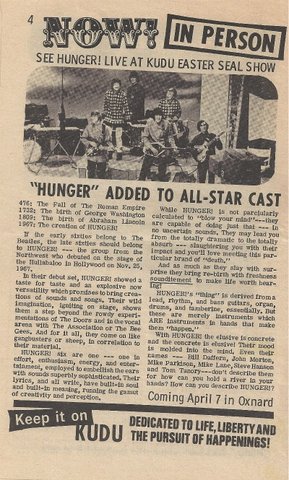
What can you tell me about the cover artwork used for Strickly From Hunger LP?
Our photographer Nick Shroad did all our promotional pictures and the album cover. He had taken a number of pictures for the album cover that day but the one that he liked most was taken off of Santa Monica Highway where a building was demolished and the walls were partially intact. It was like the Greek Coliseum in some respects or ancient ruins in modern times. It really fit for Hunger rising from the ruins. Strictly From Hunger was going to be in bold script lettering but was dumped for a more graffiti hand written lettering and it fit years later and struck a nerve in the Communist block countries for freedom when the wall went down. So fate has a way of playing out the Truth. The back of the album was taken on Colfax Street in LA on the railroad tracks. All the background buildings were taken out to focus on the band heading to the beyond definitely to catch the viewers eye. It was very well crafted and designed to remember Hunger.It wasn’t just another album cover that would be forgotten.
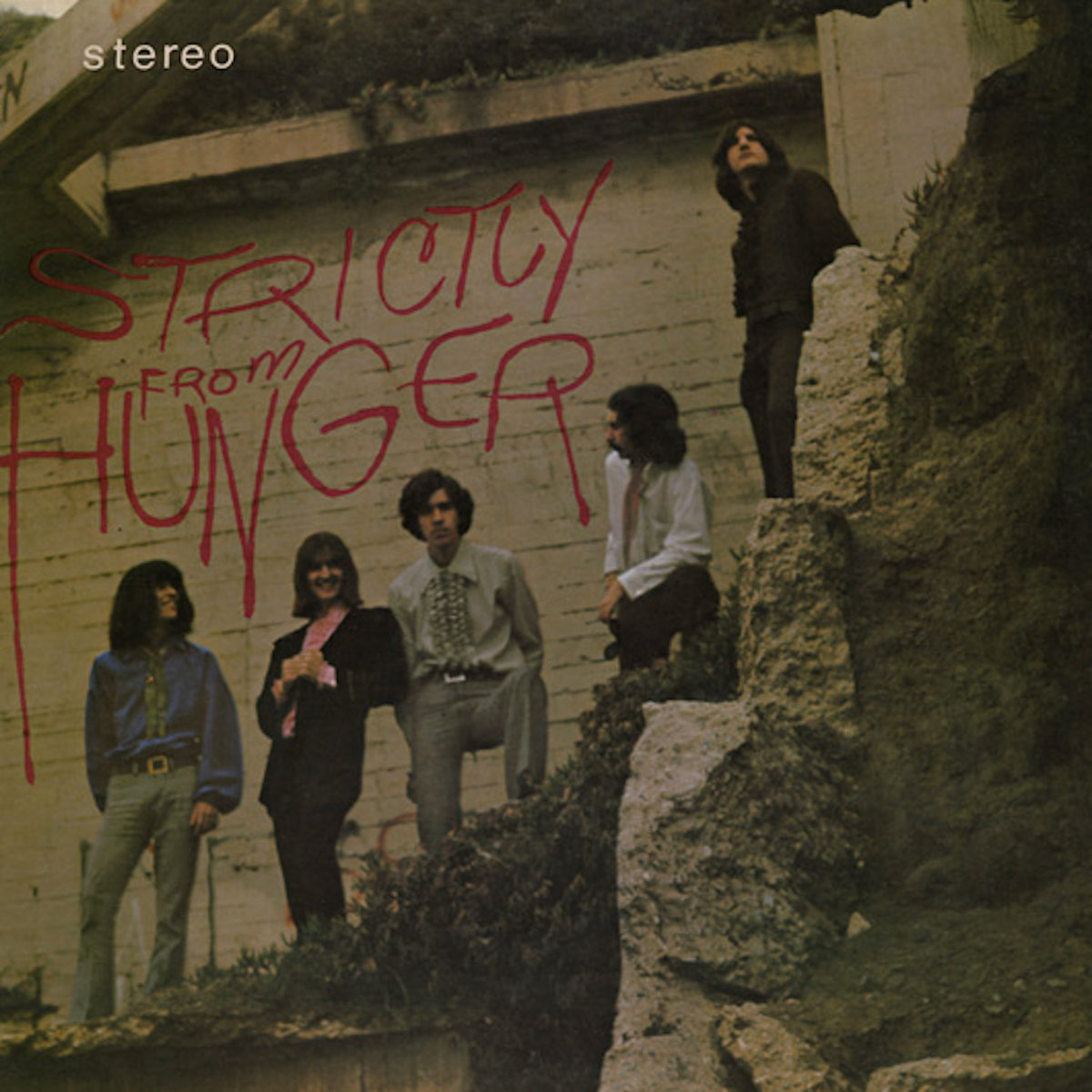
The sound on the album was really unique.
Hunger’s sound didn’t happen by accident. It was derived by experimentation. The scene in Hollywood was music that could capture the listener and originality. I was into strong beats and a driving sound and Mike Parkison was into a jazzy hammond b3 sound. We decided to marry the 2 sounds, slow it down a bit and use minor chords with 6ths.7ths and 13ths and use jazz riffs with a rock beat. It was the early phase of fusion with completely different beats even on one song. This took our music into new territory with strong vocals and thought provoking messages. Listen to The Truth, the beginning, middle and end.You’ll see the comparisons from a rock beat to a jazz beat and finally to a reggae beat. I loved dissonant sounds with minor and diminished chords. She Let Him Continue was a prime example of this.
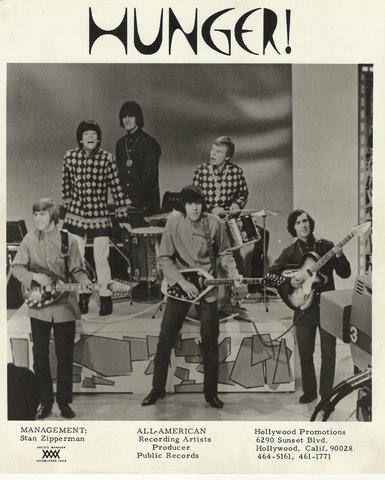
What can you tell me about your songwriting?
The song writing was coming from a deeper and darker place with a bit of Freud thrown in. With all the electronics in songs today the sound is machine like and the vocals are so synthesised it doesn’t even sound human in my opinion. I’m glad that the next generation of artists are becoming more in tune with their audience, big or small and want to connect on a more intimate level. It’s coming from a more human and creative side even with the louder bands. That’s what it’s all about having that one on one connection and Hunger truly had that on stage.
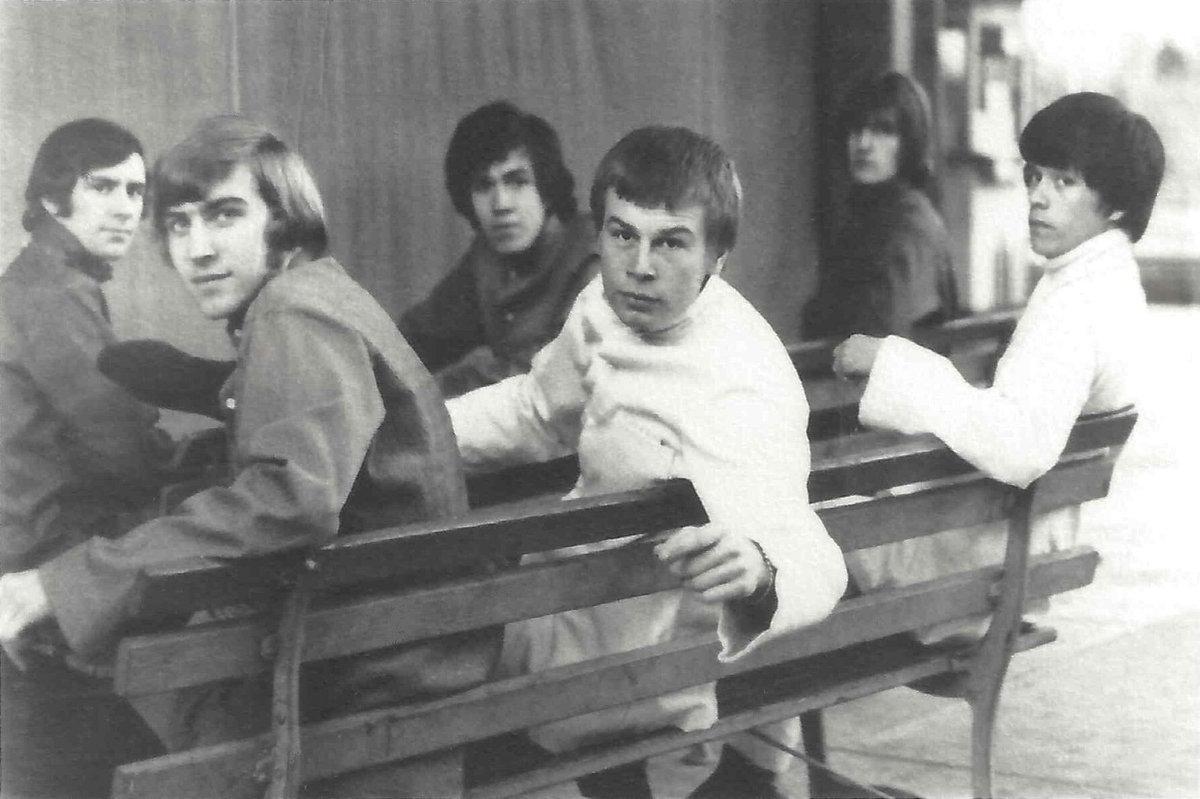
Where did you record this LP?
The Lost Album album was how the original recordings were done with the guitar parts left intact with extended solos.and more dynamics. It gives a sense how Hunger sounded live. I’m very pleased with the remastering but the Void Album captures our sound even further with stronger and longer tracks with Ed King’s lead work. He absolutely soared on “Colors”, The Lost Album also includes The Strictly From Hunger Album that was commercially made with shortened songs to allow for air-play on the major radio stations and in the 60s a song couldn’t be over 2 and a half minutes long unless it was played on a underground station.
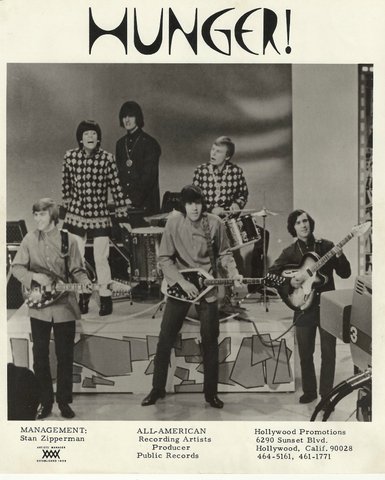
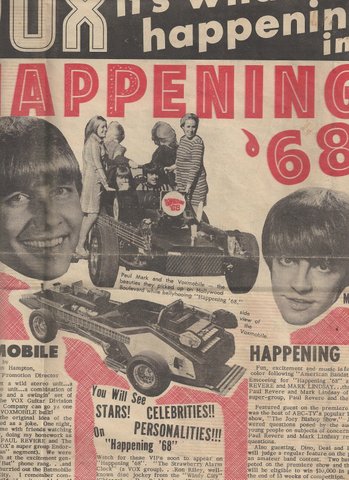
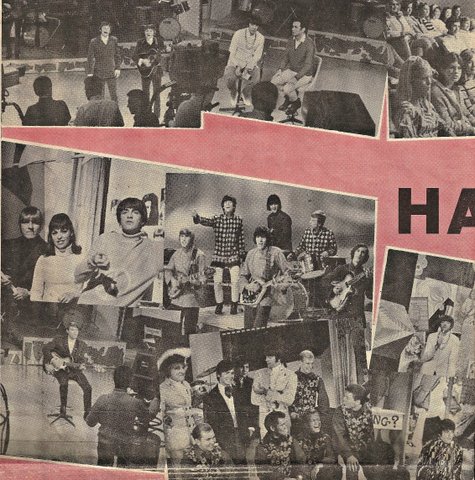
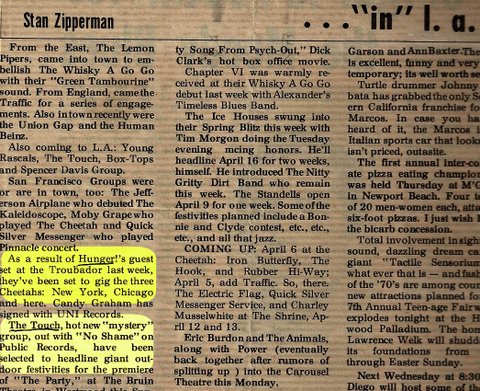
You are currently working as a spokesman for Hallmark guitars.
I’m also a spokesman for Hallmark guitars. I’m playing an exact replica of my Swept-Wing I had stolen in the 60’s designed and signed by Bob Shade the owner of Hallmark guitars. This particular instrument has the power and bite of a Les Paul and mellowness of a Strat. In my opinion it’s the best of both worlds. I used my Swept-Wing exclusively on the Strictly From Hunger album and that helped give us our unique sound. I’m thrilled to have another Swept-Wing in my arsenal and I’m using it on all my new recordings. Check out Bob Shade’s Hallmark site and see his complete line of guitars taken directly from the sixties to get that rocking psychedelic sound and beyond. Bob Shade is a great guy and loves all you future guitar heroes.
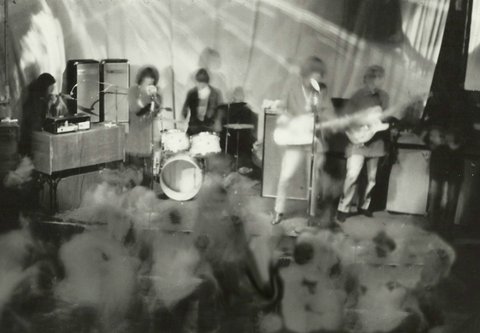
At this time in my life its about giving back. I love helping other artists and I have more projects than I can keep up with; people from all over the world. I’m giving young musicians a leg up on performing and how to avoid the pitfalls of the music industry, protecting their music and really enjoy performing because each one of us have our own unique voice to share. Its not about becoming a legend its about creating and loving what you do. In closing, I’d like to say that I was very fortunate to be a part of rock and roll history in the kaleidoscope years and I’m glad to tell the stories and experiences of Hunger truly a one of kind band.
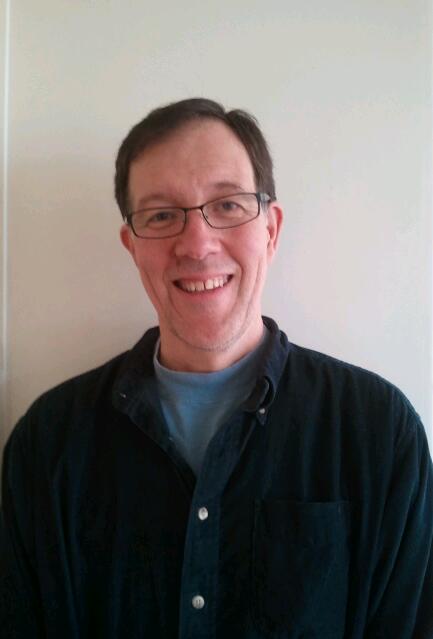
What are you currently up to and what are some future plans?
I started my own label this year and it’s called Blue Phoenix. I wanted to take control of the Hunger music because it’s no longer available on Akarma and there’s still a strong following that want to download the music. The music industry has changed so much. It’s easy to download music for free, but fans are still willing to pay for their favourite music and I want to satisfy that need and keep Hunger’s music alive. I’m the keeper of the gate for a legendary band and I’m honored to be remembered for that.
I continue to write and compose new music that will still have that certain unique style that will bring new fans and am bringing artists that are lesser known to Blue Phoenix. My label is free and open to anyone that wants to share their music and ideas through Blue Phoenix to make it a great label. You can find Hunger’s music at all download stores, but also look for the Blue Phoenix label. The download stores, I prefer you to use are Reverbnation and Google Play. Google Reverbnation, on that site type in “Strictly From Hunger.” For Google Play select music and type in “Hunger”. Another idea is added links and videos and the the article I did with Jim Cherry that gives my connection to the Doors .
– Klemen Breznikar


